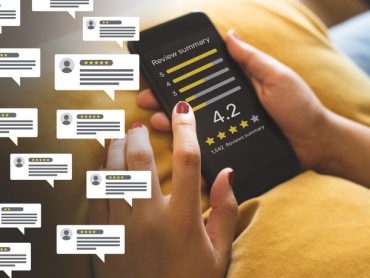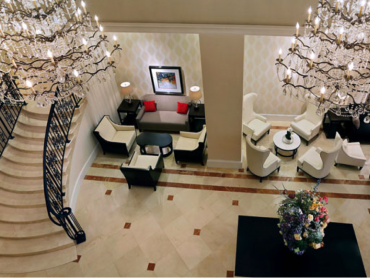Understanding Millennial and Baby Boomer Travelers: Seven things you didn’t know and how to cater to both demographics
Rarely a day will go by where the phrase ‘millennial traveler’ is not mentioned in some sort of industry bulletin. Being a baby boomer myself, it makes me smile every time a headline proclaims that radical changes to the way we operate our hotels are necessary in order to accommodate this new wave of guests with increasing spending power.
To start, put your mind at ease; there are very few changes required to accommodate both the millennial as well as the aging boomer. You can successfully deliver an outstanding guest experience for everyone, as long as you recognize the critical steps that contribute to guest satisfaction.
Some Definitions
The Baby Boomer generation is loosely defined as those born after World War II, from 1946 to 1964, and by rough figures representing about 20% of the population. They have also been dubbed the ‘me’ generation, reflecting their financial success and consumer-spending orientation. Currently, they are the largest drivers of the travel economy.
Millennials are also known as Generation Y or Echo Boomers. There are no precise dates for when this generation starts or ends, but typically it is used for those individuals born in the mid-1980s through to the late 1990s. In North America, there are now more millennials than baby boomers in numbers, and the former’s spending power in the marketplace is just starting to be felt.
Generation X falls between these two camps, reflecting those born in the late 1960s and 1970s. Often this is deemed a ‘lost generation’ due to the smaller numbers of this cohort relative to the two generations that sandwich it. Their spending habits more closely mirror those of baby boomers, although in a general sense they appear to be more frugal than the preceding generation.
Seven Factors That Cater to Both the Boomer and Millennial
Again, as a baby boomer, I can recall the pre-internet, pre-smartphone days (heck, pre-cellular phone) and marvel at the amazing technologies that have been introduced in my lifetime. Millennials appear to take all of this technological innovation for granted. They do not know a world without the internet. As such, there are many nuances in how they learn about your hotel, how they book it and their expectations upon arrival.
Yet, when it comes right down to base needs, millennials are identical to boomers. Namely, they want a good night’s sleep in a quiet, comfortable room, located near their destination. It’s the secondary needs that, on the surface, appear to differ between the generations, but as you’ll see, are not really that far apart. Here are seven important elements to consider in your hotel’s management and operations vis-à-vis the generational gap.
- Think mobile. It seems to me as if there are two types of millennials. No, not male or female, but rather, Android or Apple users. Smartphones are the de facto standard, for both the millennials as well as most boomers who have been coerced to adapt to the times. The core difference lies in how the two generations use mobile devices. Millennials see their smartphone as the primary computing tool, less so for boomers who rely more upon their laptops.
Interestingly, this gap might be closing, with smartphones increasing in size and intuitive capabilities over the past few years. Witness the iPhone 6+ or Samsung Galaxy Mega 2, both fielding screen sizes more than four times that of the earliest Blackberry. This increased surface area helps the boomers master the mobile as aging eyes and lower finger dexterity are now adequately compensated.
For the hotelier, you need to recognize that your mobile website interface is more important than ever. Google has recognized this too and severely penalizes search rankings for sites that have weak mobile capabilities. While reading this article, why not take a moment to check your property’s website on your own mobile device right through to making a booking. Was it easy? How did your property look? Could you intuitively follow the booking interface? On several properties that our team manages we are seeing over half of our bookings now coming through the mobile channel. Importantly, this business is coming from all age groups, not just millennials.
The question of adding a mobile application or app for your property is one that I am asked quite regularly. Apps are popular, as they improve efficiency for specific activities, such frictionless access to activities within the hotel. If you are part of a chain, I would recommend that corporate build the app for all properties to collectively contribute resources so that the app’s networking power is properly realized. If you are an independent property, one has to question the utility of the app relative to the usefulness for the guest. To ask a guest to download an app for a one-time stay is overkill.
- It’s not just free WiFi your guests want, it’s real, useful bandwidth. By and large, the hotel world has gotten over the hump of charging for basic WiFi, as most have at least a rudimentary level of WiFi offered at no charge. If you are one of the few holdouts thinking you can charge for basic WiFi and get away with it, take a look at your TripAdvisor rankings and recognize that it is costing you at least half a rating point, maybe more.
WiFi bandwidth defines the level of smartphone (and tablet) use. Basic email, Facebook and other social media use a limited amount of data transfer. Netflix and gaming require a considerably higher level of bandwidth – far more than the ‘basic’ allotment. In-room televisions are rarely programmed with anything beyond CNN, the basic four network channels and some local favorites, clearly with the hotelier’s goal being to ‘sell’ the guest additional programming. Here the millennial is a step ahead of the boomer as their entertainment comes from their own devices. If you don’t have WiFi, they’ll tether their cell service to achieve the desired connection. Boomers are somewhat less savvy insofar as finding a technical workaround.
- Start thinking of your lobby as your property’s living room. Also known in contemporary terms as the ‘third space’, the lobby is more than just a place for guests to wait for transportation. It’s gotten this ‘tertiary’ nickname because it falls somewhere between the home and office with a hybrid modality.
Think about your last trip to Starbucks and how it seemed that folks just enjoyed being in that cozy, warm atmosphere with their coffees and readily available WiFi bandwidth. This may be a millennial inception, but the concept is rapidly growing with boomers as well. Perhaps it’s a throwback to the pre-boomer days of the hotel bar, which traditionally was not only the hotel’s action hub but also a hotspot for the community at large. In any event, it’s time to rethink your lobby’s utilization and guest appeal – the topic of which merits its own article.
- Amenities important for boomers are not necessarily as critical for millennials. There is some divergence to be found in these secondary considerations, although not as much as you would expect. First is daily newspaper delivery. As much as I personally like a morning newspaper as a coffee accompaniment, this is rarely something that millennials desire. Their news gathering tool is their smartphone or tablet, which they tailor to their specific needs.
Room service is another area where there is cause for difference. Boomers will take advantage of room service to a greater extent than millennials who will opt for something that can be consumed in the lobby. For the younger generation, the term ‘grab and go’ has become mainstream whereby fast casual and quick-serve options are preferable to traditional full-service meals. Minibars are also looked at differently, with boomers looking less at the health factor than millennials.
And, since I have never seen a millennial plug in an iron, let alone press an article of clothing, amenities in this category are ripe for renewal, especially when you consider how fashion is changing in conjunction with the rise of millennial businesspersons who both lack ironing skills and need to look sharp for their next meeting.
- What’s your brand name again? Last year I completed a survey of millennials traveling on business. One of the questions I asked related to brand awareness, an important precursor to brand loyalty as you can’t be loyal to something you don’t know exists. There are now so many brands with limited amounts of advertising to generate any sort of understanding as to what the brand stands for. Add onto this the fact that a significant portion of business comes from the OTAs – that is, third-party entities that don’t convey the full brand message – it is no wonder that all consumers from boomers to millennials are confused.
To my knowledge, there have been no published studies to definitively resolve the difference in value of loyalty programs between boomers and millennials. We all know that loyalty programs generate redemption rooms business for chain properties. We also know that OTAs have their own loyalty operations. My notion is that the OTAs are now generating a lot more loyalty points amongst millennials, which will then be transferred into loyalty to those third-party entities and not to any specific hotel brand.
- Breakfast is the most important meal of the day. Just about everyone eats breakfast, and it is the one part of your F&B operation where you can easily shine – that is, which the least amount of labor and cheapest ingredients required. If you are a limited-service property where breakfast is included, this is not an area where you blindly cut costs. Your property will be judged just as much by the quality of your pancakes as the quality of your accommodations! Coffee quality is also particularly important, with Starbucks being the standard of quality.
- I’m an explorer! Both boomers and millennials strive for a sense of exploration. No longer satisfied with the status quo, both want to learn and grow. Exploration might mean trying a different property on their next trip to your region, or it might mean trying new activities within your property such as your spa or a different restaurant. Exploration can also be satiated by providing guests with a foldout map of the local area, making your property the headquarters for their scouring of the surrounding streets. Foster this exploration and your guests will reward you for it.
To conclude, here’s my key takeaway: boomers, millennials and even Generation X are all guests at your hotel. They deserve the best that you have to offer. Recognize their needs and accommodate them as best you can.
(Article by Larry Mogelonsky, published by AAHOA Member Pub on July 1).



